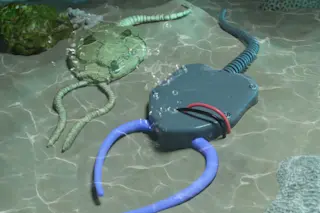By this fall, the newest attraction at Zoo Atlanta may not be an endangered white rhino or a giant panda. The creatures in the new exhibit-- a few dozen gorillas--won’t even be alive. They will exist only in a virtual electronic world, a world visitors can enter by donning a helmet that presents a three-dimensional view of the gorilla habitat. With a joystick, a user walks among the apes, becoming an adolescent gorilla. So if the user approaches a male silverback and gets too close, says Larry Hodges of the Georgia Institute of Technology, the silverback is going to give a warning cough--which means ‘back off.’ If the user doesn’t back off, the silverback might charge. The virtual charge can be startling, says Hodges. In tests, users start to look for the move-back button real fast.
The cyber-apes and their virtual world were developed by programmers at Georgia Tech to ...














